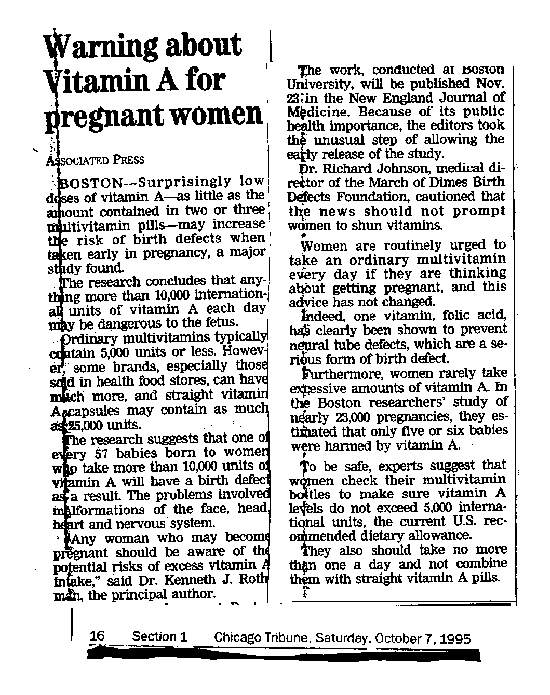

In other words, 2 months before the study can be critically analyzed by other scientists.
The reader should be aware that the possibility of "fetal defects" has already been listed in orthodox nutrition text books as a "side affect of vitamin A." That makes for an interesting conundrum. If this is "old news" -- why is it a "major story"? If this is, as we believe, the first such study in humans, how did the text book writers know? Perhaps they are clairvoyant?

Of course, the Chicago Tribune may have it wrong (but then we won't know until the study is published at the end of November!?), but if these numbers are correct, then Boston University idea of a statistically significant public health risk "estimated 5 or 6 per 23,000" simply boggles the mind.
For the record, here is Dr. Roger J. Williams on Vitamin A and birth defects from page 59 of his 1971 book Nutrition Against Disease: (paperback edition):
"Vitamin A was one of the first nutrients found to be necessary in the process of healthy development. Many years ago high grade breeding sows were fed a diet deficient in vitamin A during early pregnancy. [14,15] In one litter of eleven pigs, every animal was born without eyeballs. On the same diet, other abnormalities were also observed -- cleft palate, cleft lip, accesory ears, arrested axcension of the kidneys. That the lack of vitamin A alone was responsible for the abnormalities was shown by feeding the same animals exactly the same diet with vitamin A added. There were no abnormalities in the litters to which plenty of vitamin A was supplied. Similarly, rats require about twenty times as much vitamin A for maximum reproduction as they need merely to maintain passable health and normal vision.[16]"